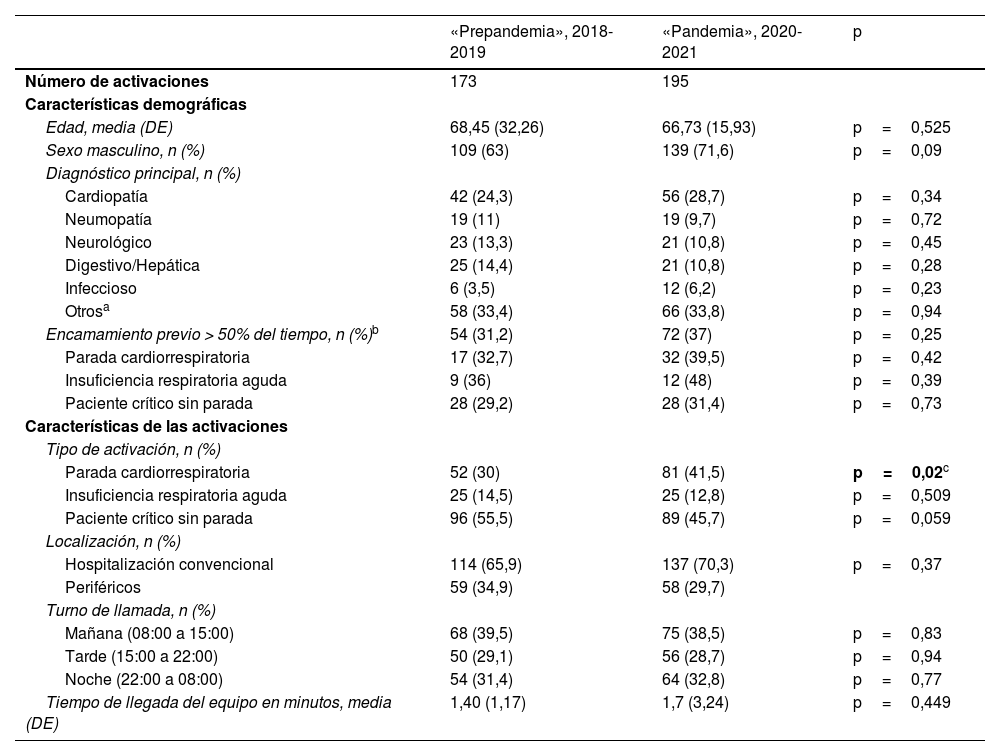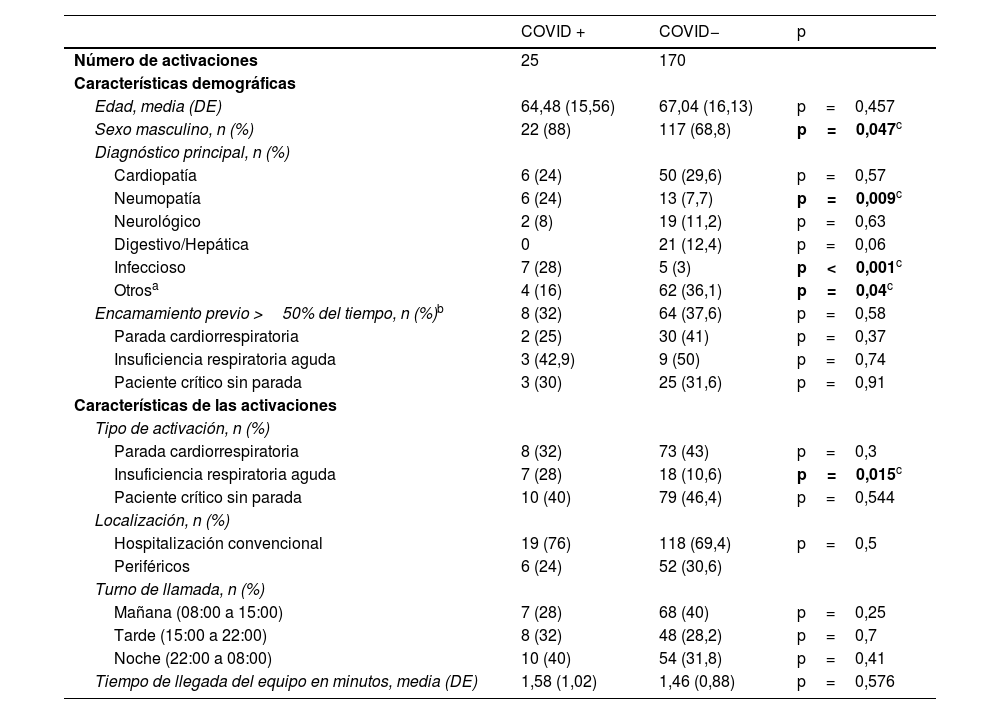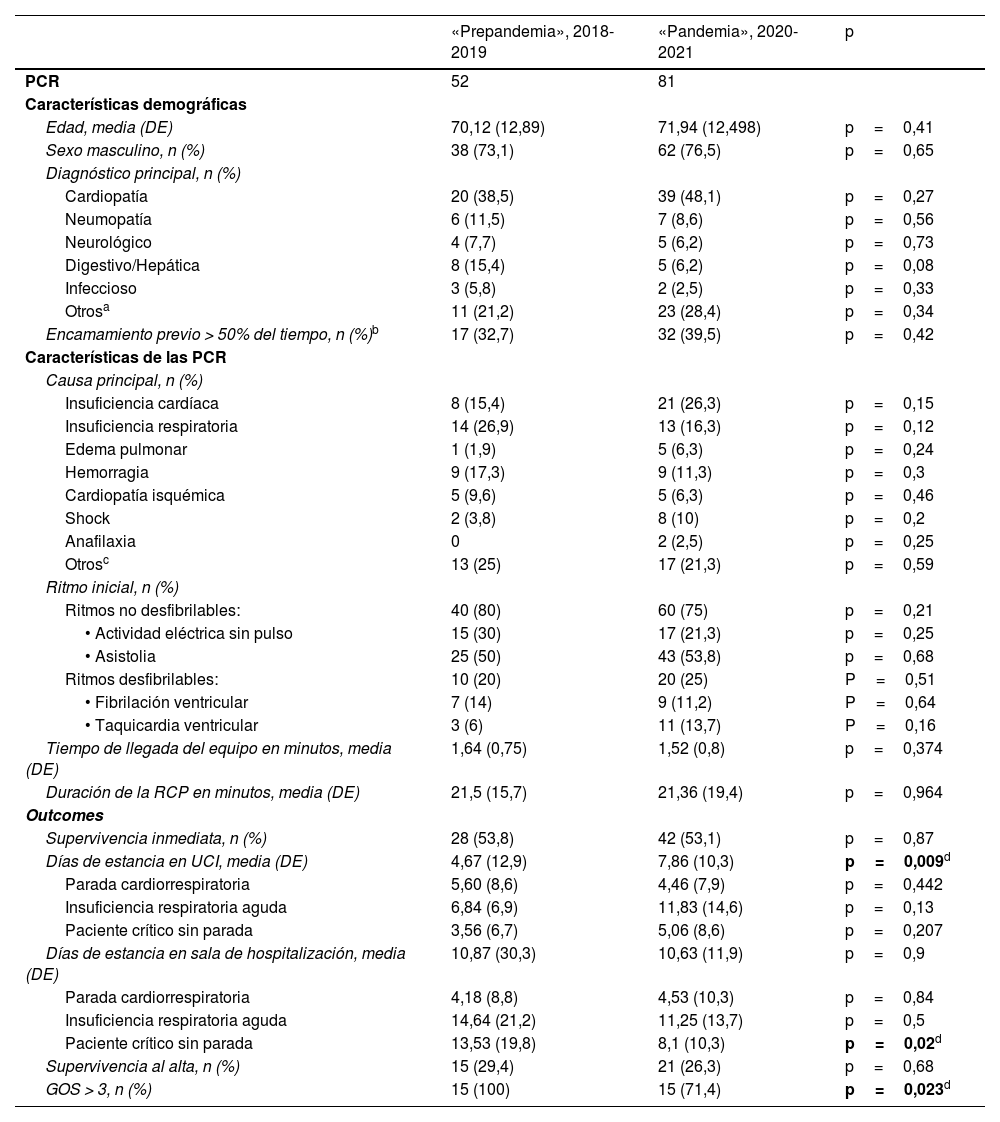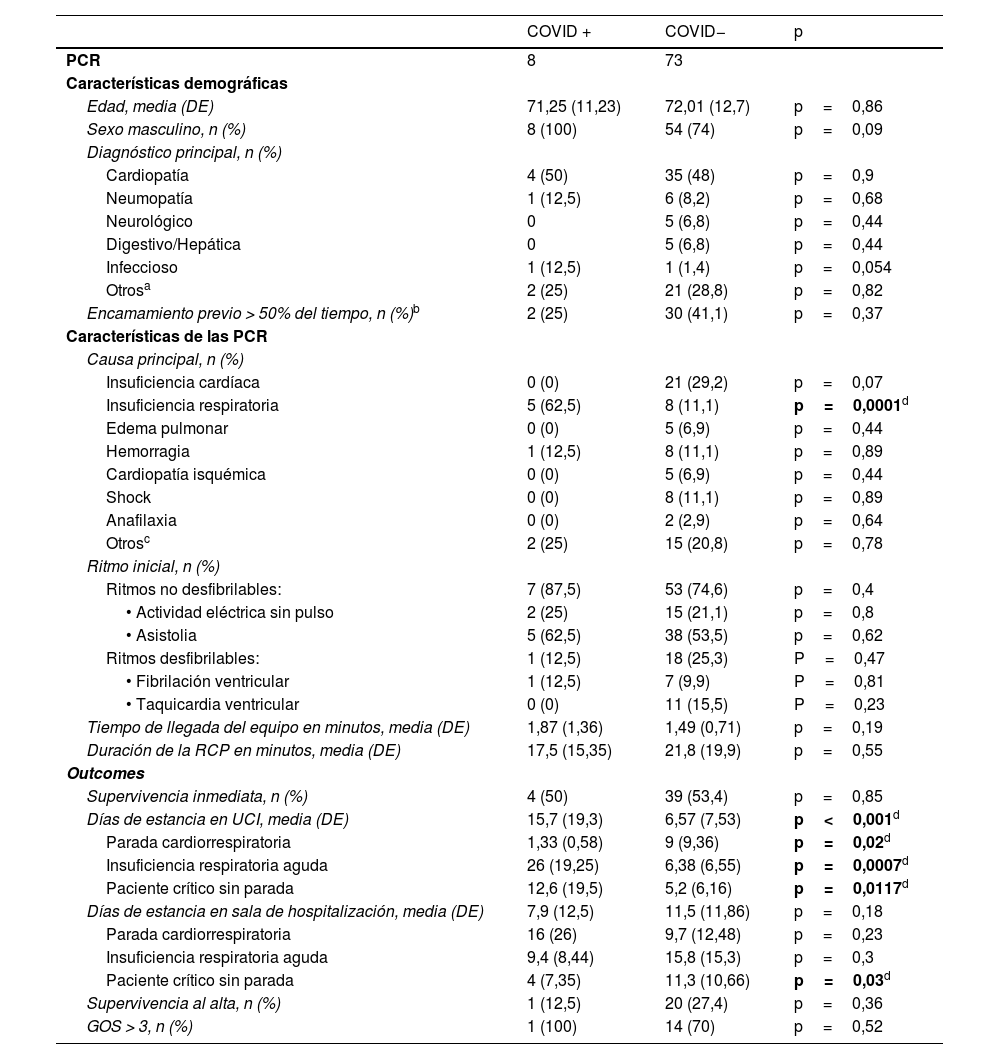Analizar las características de los pacientes atendidos por el equipo de atención a la parada cardiorrespiratoria intrahospitalaria (PCIH), las PCIH per se y la reanimación cardiopulmonar (RCP) en el periodo prepandemia por COVID-19 y compararlas con el periodo pandemia, analizando, además, las diferencias entre pacientes COVID+ y COVID−.
DiseñoEstudio observacional y retrospectivo que analiza las activaciones del equipo de PCIH del 1 de enero 2018 al 31 de diciembre 2021.
ÁmbitoHospital de tercer nivel.
PacientesPacientes mayores de 18años que requirieron asistencia del equipo de atención a la PCIH.
IntervencionesManiobras de RCP según las guías de soporte vital avanzado del European Resuscitation Council publicadas en 2015, así como las modificaciones realizadas en época COVID (2020).
Variables de interés principalesDatos demográficos, epidemiológicos, activaciones del equipo de PCIH, días de estancia en la unidad de cuidados intensivos (UCI) y en la sala de hospitalización, supervivencia y pronóstico neurológico.
Resultados368 pacientes: 173 en el grupo prepandemia y 195 en el grupo pandemia. La recuperación neurológica fue mejor en el grupo prepandemia y la estancia en la UCI fue más prolongada en los pacientes COVID+. Sin embargo, no encontramos diferencias ni en el tiempo de llegada del equipo o en el tiempo de RCP ni en la supervivencia inmediata o al alta hospitalaria entre ambos grupos, ni entre pacientes COVID+ y COVID−.
ConclusionesLos cambios en los protocolos de atención a la parada cardiorrespiratoria debido a la pandemia no parecen haber afectado los tiempos de atención ni la supervivencia inmediata o al alta.
To analyze whether the characteristics of the patients treated by the in-hospital cardiorespiratory arrest team, IHCA and cardiopulmonary resuscitation (CPR) were different in the period before the COVID-19 compared to the pandemic period; also analyzing the differences between COVID+ and COVID− patients.
DesignObservational and retrospective study from January 1st, 2018, to December 31st, 2021.
SettingTertiary hospital.
PatientsAll adult patients over 18years old requiring attention from the IHCA response team.
InterventionsCPR maneuvers according to the advanced life support guidelines of the European Resuscitation Council published in 2015, as well as the modifications made in the COVID era (2020).
Main variablesDemographic and epidemiological data, activations of the IHCA response team, CA data, hospital and intensive care unit (ICU) length of stay, survival and neurological outcome at hospital discharge.
ResultsA total of 368 patients were analyzed: 173 in the pre-pandemic group and 195 in the pandemic group. The neurological outcome was better in the pre-pandemic group, and COVID+ patients had a longer ICU length of stay. However, no differences in the response time of the CPR team or in CPR duration were found, nor in immediate survival or at hospital discharge, between both groups or between COVID+ and COVID− patients.
ConclusionsChanges in CPR care protocols due to the COVID-19 pandemia did not seem to affect response times from IHCA team neither immediate nor discharge survival.
Artículo
Diríjase al área de socios de la web de la SEMICYUC (www.semicyuc.org ) y pulse el enlace a la revista.












